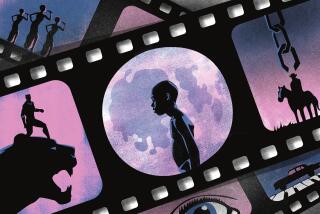Joseph Kane, 103; Author Dug for Forgotten Facts and History
Jack Webb would have loved him.
With his refusal to accept any historical factoid without proof, he had to be the original advocate of Sgt. Joe Fridayâs polite plea for âjust the facts, Maâam,â which was immortalized by Webbâs âDragnet.â
Joseph Nathan Kane, national repository of provable trivia from Americaâs last four centuries or so and author of the five editions of âFamous First Facts,â has died. He was 103.
Kane, who had suffered a broken hip six years ago and had been confined to a wheelchair due to Parkinsonâs disease, died Sept. 22 of causes associated with age in West Palm Beach, Fla. He had moved there a few years ago to share the condo of his only survivor, his sister, Ann Madier.
Asked in 1999 at the celebration of his 100th birthday what he owed his long life to, the blunt-spoken Kane said simply: âI did nothing wrong.â
Born on Manhattanâs Upper West Side, the bachelor Kane lived there most of his life.
For many decades, he occupied a garret two flights up from where the elevator stopped, an apartment stuffed with his meticulous, perfectly organized reference books and index cards.
Kane shared his carefully collected facts with a fascinated public in 52 books, beginning in 1933 with âFamous First Facts: A Record of First Happenings, Discoveries, and Inventions in the United Statesâ and ending in 1997 with âNecessityâs Child: The Story of Walter Hunt, Americaâs Forgotten Inventor.â Hunt, Kane discovered, was the inventor of the sewing machine, the safety pin, the fountain pen and the heat-radiating stove, but either sold the patents or never obtained them and never learned the art of self-promotion.
Eldest of three children of a fur importer and the grandson of a composer, young Kane learned to play the mandolin, violin and banjo. But asking questions intrigued him far more than music.
Whenever a teacher declared some accepted point in history, the upstart boy asked, âHow do you know?â It was a question he asked throughout his long life. He explained to an Associated Press writer in 1988, when he was 89, âIâm stupid enough to not believe anything until I see the proof.â
Kane graduated from Columbia University and planned to serve in World War I until he fell ill in the influenza epidemic of 1918. Fluent in French, German and Spanish, he went to work for the confectioner D. Auerbach & Sons and was soon running its export business.
That led him into writing--initially articles about the export business for trade journals. He went on to write for such publications as Advertising Age, Printersâ Ink and Nationâs Business. Over the years, he published more than 1,000 newspaper articles.
Fascinated with historical facts, Kane decided in the 1920s to write a book about the inventors and other achievers that history either had forgotten or never recognized.
From 1922 to 1932, according to the preface of the most recent edition of âFamous First Facts,â published in 1997, Kane spent much of each year traveling the country, visiting libraries and museums and talking to inventors or their descendants, examining newspaper clippings and records and sorting out conflicting patents. His intent, he said in his reference masterpieceâs first preface, was not âto remold public conceptions, but merely to present impartial facts
After 11 rejections from publishers, Kane asked librarians he met around the country to write letters about the need for such a book. In 1933, Halsey W. Wilson, who had founded H.W. Wilson Co. in 1898, agreed to publish âFamous First Factsâ and then asked for several more books.
Kane produced such works as âFacts About the Presidents,â which noted that James Madison had been the shortest, at 5 feet, 4 inches, and that Grover Cleveland had the most nicknames--20--including Dumb Prophet, Buffalo Hangman and Grover the Good.
Kane also wrote âThe American Counties: A Record of the Origin of the Names of 3,067 Counties, Dates of Creation and Organization, Area, Population, Historical Data, etc.â which took him on a personal odyssey to every county courthouse (or jail if that was where the records were kept) in the country.
Some of his books were easily forgotten, even though comprehensive. âWhat Dog Is That?â was a 1944 compendium of the 122 pure breeds recognized by the American Kennel Club.
But the âFamous First Factsâ books were so popular they led to a secondary career with radio and then television quiz shows. In 1938 and 1939, Kane was host for a radio program, âFamous First Facts,â and in the 1940s and 1950s, he wrote questions for such shows as âBreak the Bank,â âDouble or Nothingâ and âThe $64,000 Question.â
Among Kaneâs arcane factoids likely to stump contestants were such seemingly simple queries as who was first president of the U.S., who built the first commercial American automobile or who flew the first airplane. The answers, Kane said, were not George Washington, Henry Ford or Wilbur and Orville Wright.
Washington was the first president elected under the U.S. Constitution in 1788, Kane would explain, but Thomas McKean of Delaware was the first president of the United States in Congress assembled under the Articles of Confederation in 1781.
âOver 50 people have told me their father invented the automobile,â he said in 1988. âWhen I start verifying claims, I find that someoneâs father may have invented the fourth knob on the fifth spark plug on the sixth day at 7 oâclock. But he didnât invent the automobile.â The man who built the first commercial American one, Kane said, was Charles Edgar Duryea who opened the Duryea Motor Wagon Co. in Springfield, Mass., in 1895. He started building his automobile in 1891 and first drove it on April 19, 1892.
And the first airplane, Kane determined, was flown more than two years before the Wright Brothers lifted off from Kitty Hawk, N.C. Gustave Whitehead flew on April 14, 1901, near Bridgeport, Conn.
Kane, who could also report with confidence that the first sheep had been brought to the U.S. in 1609 and the first camels in 1721, kept a few inventions along with his myriad facts about them. One was the first fountain pen invented in America, and another was Walter Huntâs patent model for the first American safety pin, created in 1849.
More to Read
Sign up for our Book Club newsletter
Get the latest news, events and more from the Los Angeles Times Book Club, and help us get L.A. reading and talking.
You may occasionally receive promotional content from the Los Angeles Times.






